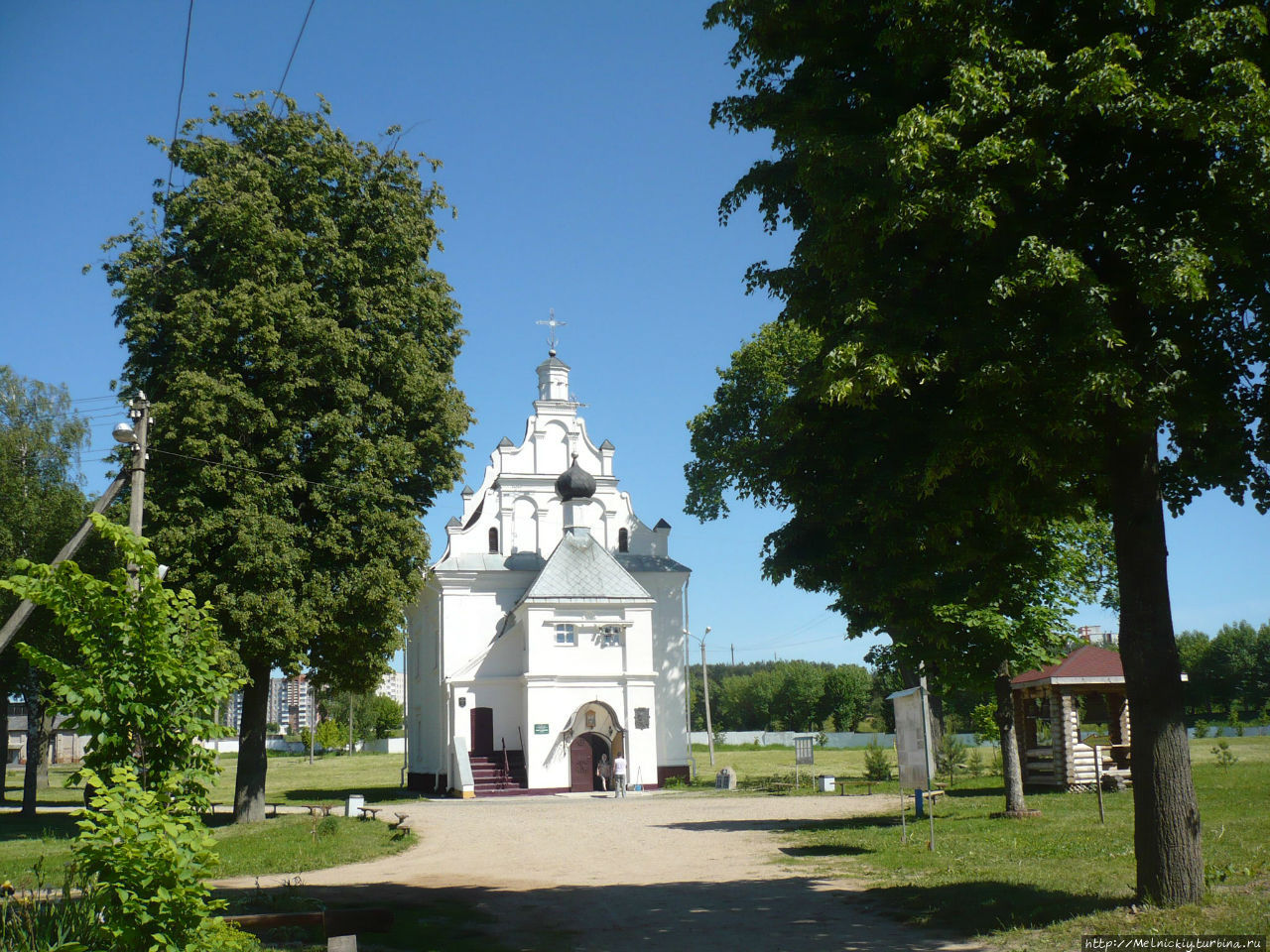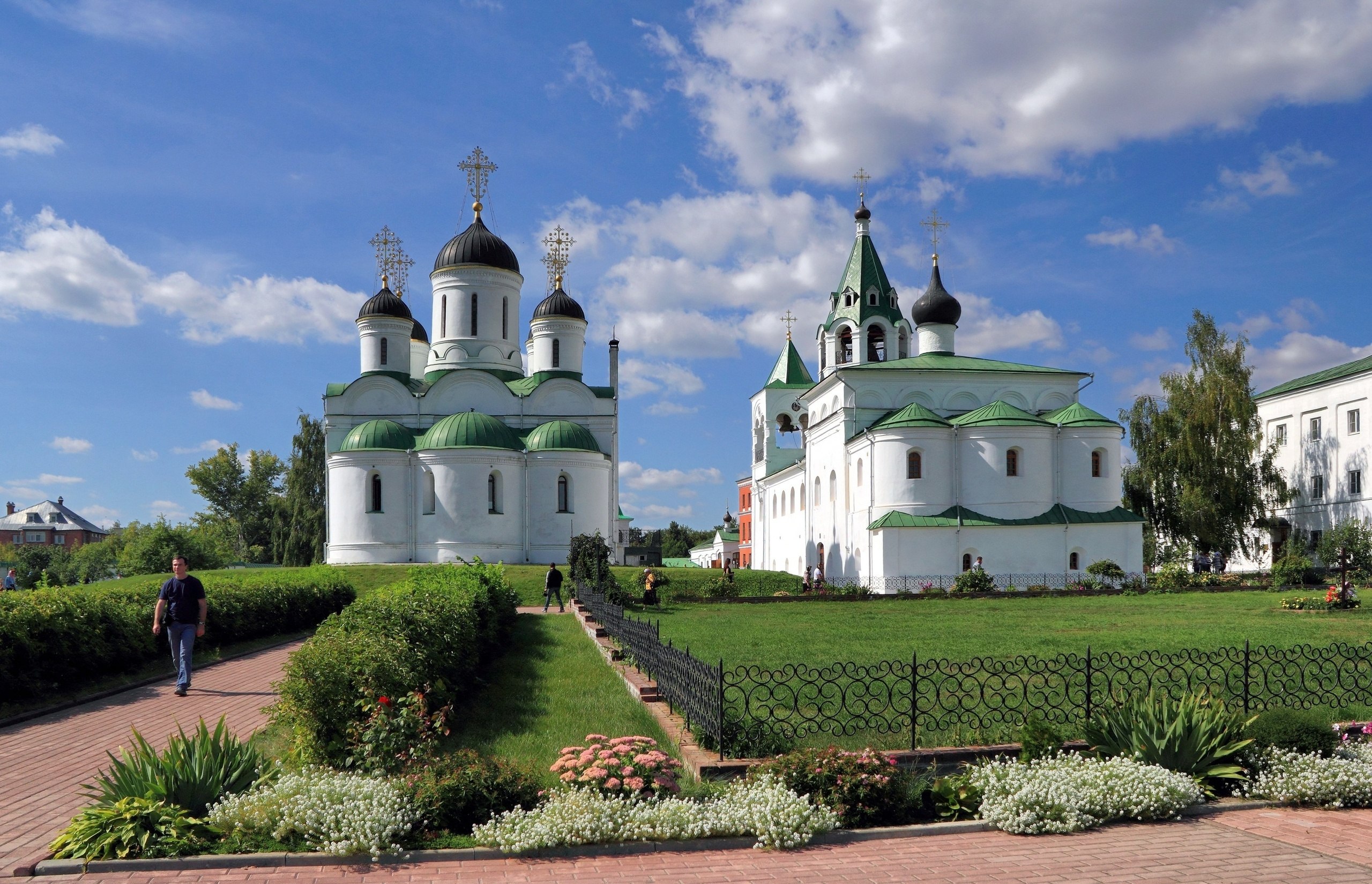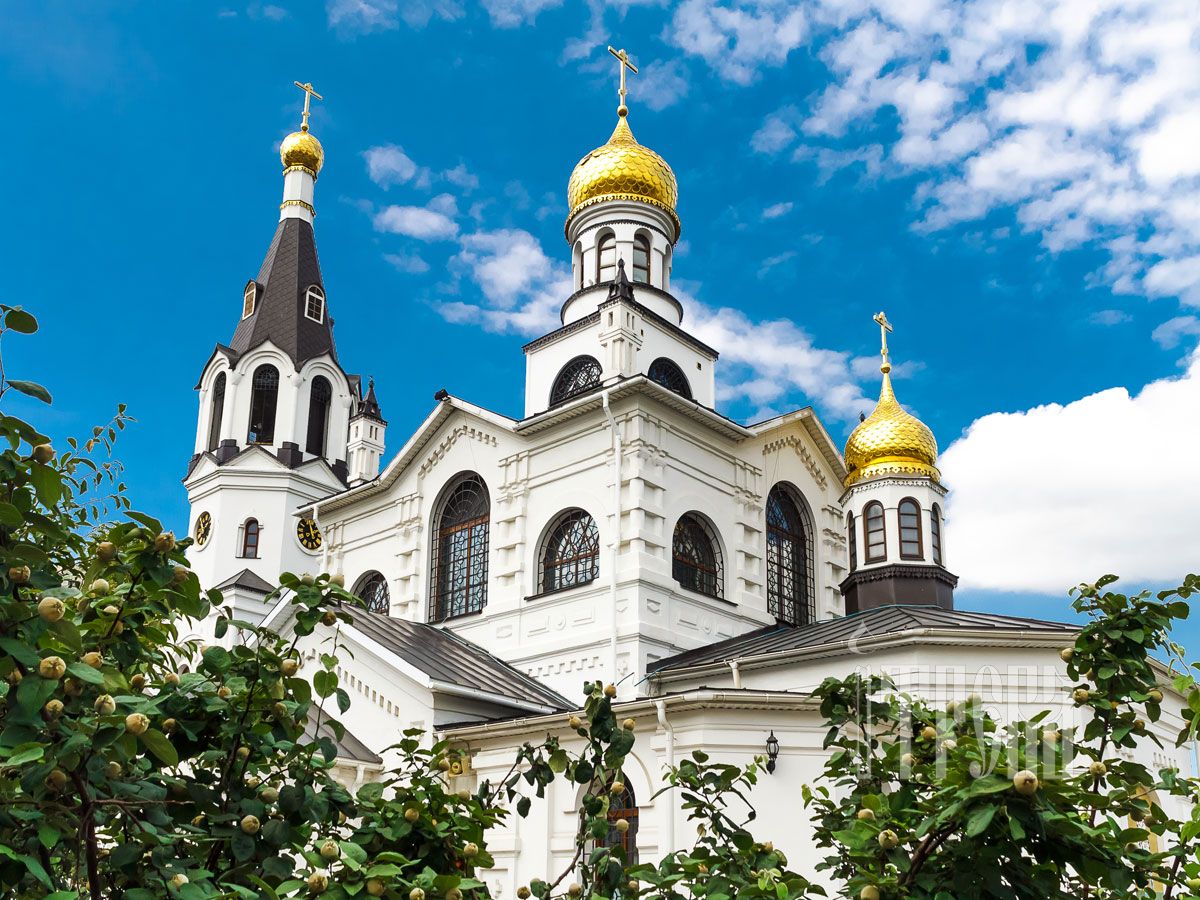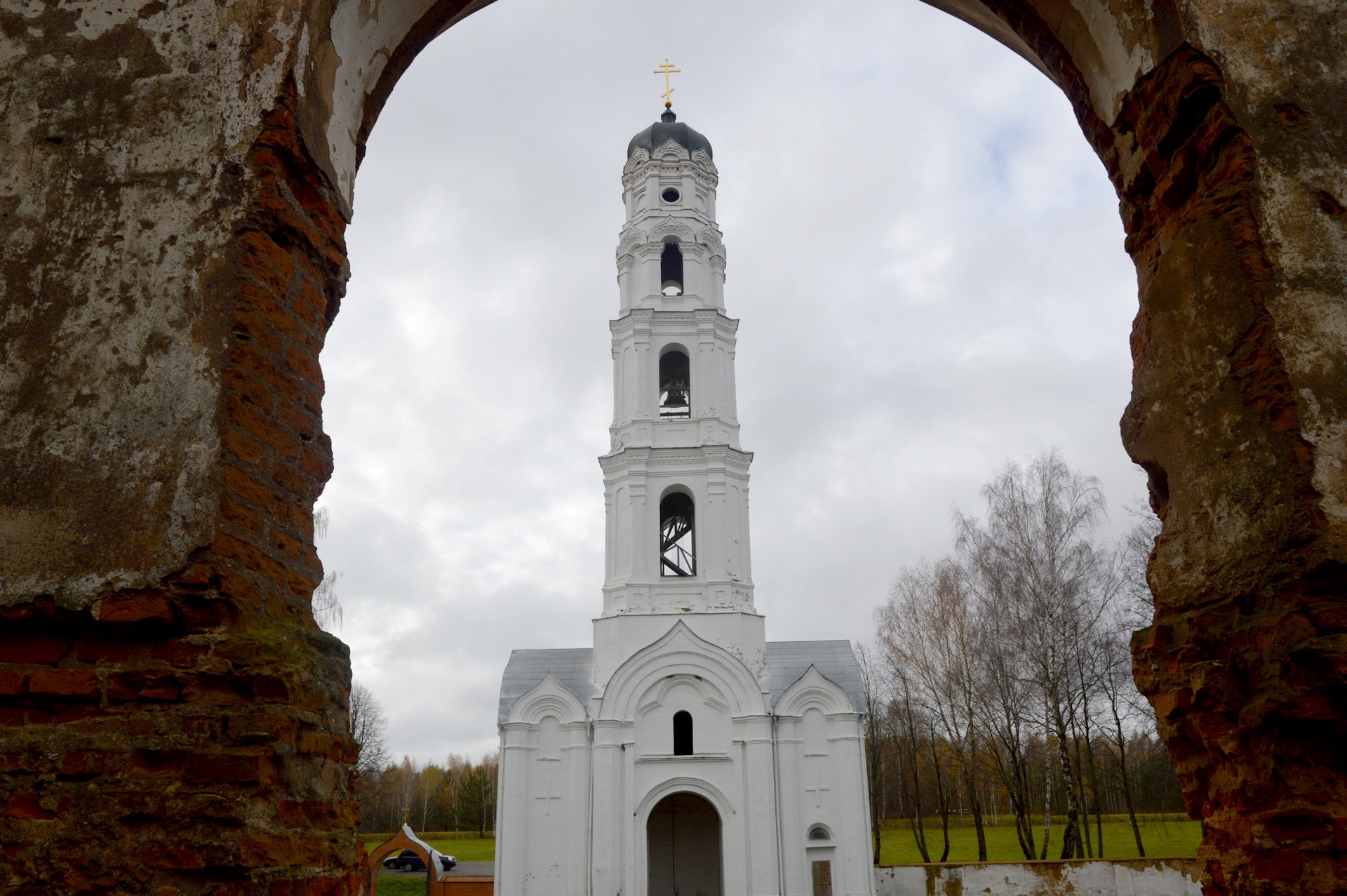Male monasteries in Belarus
ST. ELISEEVSKY LAVRISHEVSKY MEN'S MONASTERY
Lavrishevsky monastery is one of the oldest Orthodox monasteries known in Western Russia and Lithuania. Its foundation dates from the second half of the XIII century.
According to early church tradition, the history of the foundation of the Lavrishevsky monastery is closely connected with the name of Elisha Lavrishevsky.
The oldest mention of the Monk Elisha is in the dedicatory Lavrishevsky monastery (1517) A.I. Khodkevich transferred his possessions in Lychitsy. The description of Elisha’s life is in the work of the professor and rector of the University of Vilnius Albert Koyalovych Miscellanea rerum ad statum ecclesiasticum in Magno Lithuaniae Ducatu pertinentium (1650). According to him, prep. Elisha was born to “noble parents in Lithuania”, “if some are not mistaken” - to “Troden Prince of Lithuania”, and for a long time he lived at the court of the Grand Duke of Lithuania, “probably Mendovga”, occupying a high position. Later, having left worldly life, Elisha found a deserted place surrounded by swamps, where he received monasticism from a certain ascetic. When many novices and monks gathered around Elisha, he built a church and monastery for them. Elisha was killed by his pet, a possessed youth servant on the night of October 23. Unfortunately, more about the life of St. Elisha does not know anything to the author of the mid-17th century.
According to the testimony of A. Koyalovich, in 1514 at the cathedral in Vilno prep. Elisha was glorified in the face of saints.
The sanctity of the Monk Elisha was revealed, in particular, through miracles from his relics, which especially helped those suffering from demoniac.

HOLY EPIPAPHY MONASTERY IN POLATSK
Holy Epiphany Monastery was founded in 1582. Now it is the abolished Orthodox monastery of Polotsk. It consisted of a stone Epiphany Cathedral and a residential building.
In 1656–1664 the fraternal school operating at the monastery was served by the famous theologian and poet Simeon Polotsky, who later became a mentor to the children of the Russian King Alexei Mikhailovich.
The Epiphany Cathedral was built in 1761–1779. In the years 1780-1788 with funds allocated by Catherine II, the monastery was significantly expanded. In the same year, a stone two-story building was built. From 1784 to 1900 there was a public school. In the 1970s, the building was used as a residential building. Now it houses the Museum-Library of Simeon Polotsky and the Museum of Printing.
The Epiphany Cathedral was closed after the First World War. During the years of Soviet Union there was a gym. The building was restored in 1981 and housed an art gallery. In 1991, the church was handed over to believers, and now it is the cathedral of the Polotsk and Glubokoe dioceses.
THE HOLY BOGOYAVLENSKY KUTEIN MONASTERY IN ORSHA
The monastery was founded in 1623 as an Orthodox male monastery on lands donated by the noble family of Statkevichs. It is located in Kuteyn - the northwestern outskirts of Orsha at the confluence of the Dnieper and Kuteyinka rivers. In 1631, when the monastery was founded, the icon of the Mother of God was miraculously revealed, called "Orshanskaya". This icon is the main shrine of the monastery.
The wooden Epiphany Cathedral was built in 1635 and consecrated by St. Peter the Grave. The second church - in honor of the Nativity of Christ - was also wooden, two-storyed. After the reconstruction of 1868, it was re-consecrated in honor of the Holy Trinity.
Kuteinsky monastery is one of the largest and most famous medieval cultural and educational centers of Belarus. At the monastery there was a school, a library. The best craftsmen were sent from the Kuteinsky monastery to the Moscow state: wood carvers, carpenters, masons, chasers, engravers. The monastery was well known for its printing house, which became the center of Belarusian Cyrillic printing in the 17th century. It was there that the first printer Spiridon Sobol published educational and liturgical literature.
By 1640 about 200 monks labored in the Kuteinsky monastery. The monastery provided assistance in the foundation and existence of many Orthodox monasteries. In 1655 the brothers of the Kuteinsky monastery, together with the printing house, moved to the Iversky monastery near Novgorod. Resettlement was associated with the oppression of Orthodox Uniates.
The Epiphany Cathedral burned down from a lightning strike in 1885. It was not restored anymore. The life of the monastery was interrupted in 1917. An ancient cave monastery was found on the territory of the monastery in honor of the Resurrection of the righteous Lazarus. The monks found him in 1910 - 1912. The second time the caves were explored in 1926, two corridors, numerous caves and niches were found.
The monastery began to be rebuilt in 1990. In 1995, after the restoration, the church in honor of the Holy Trinity was consecrated. Workshops have been created in the monastery, in which all kinds of wood carvings and icon-painting works are carried out, iconostases and much more are designed and manufactured.

ZHIROVICHI MALE MONASTERY
The beginning of the construction of this monastery is a truly wonderful phenomenon. In 1470, in the small town of Zhirovichi, which belonged to the family of Soltanov, the miraculous icon of the Mother of God suddenly appeared. In one of the Soltan forests, the shepherds saw a bright light that simply permeated the branches of the pear. They decided to see what it is. Their find simply shocked - in the branches of a pear tree people found a small icon of the Mother of God, which radiated this extraordinary radiance. With trepidation and reverence, the shepherds took the icon and carried it to their master Alexander Soltan. But the master did not pay due attention to the find, but hid it in the chest. Imagine his surprise when a day later he did not find the icon in the chest to show it to guests. A few days later, the same shepherds found the icon on the same pear tree and again brought it to Soltan. Now the master looked at the icon in a completely different way and made a vow to build a church in honor of the Most Holy Theotokos in the place where it appeared.
The news of the miraculous icon quickly spread, and in Zhirovichi crowds of pilgrims from near and far lands reached. Some of them did not want to leave here, and soon a settlement was formed near the wooden church. And in 1493 a monastery appeared here.
The terrible fire of 1520 destroyed the wooden church, although the inhabitants tried to save it. Residents mourned for irreparable loss. Then, later, the icon returned.
After some time, a new stone church was erected on the site of an old wooden church. It was consecrated in honor of the Assumption of the Virgin. Here the icon of the Mother of God is stored to this day.
Today the monastery consists of five active churches, four residential buildings, farm buildings, a monastery pond, a garden, a vegetable garden and an apiary. The monastery has a seminary that trains future clergymen.
And until today, believers flock here for support and help.

LYADENSKY BLAGOVESTCHENSKY MEN'S MONASTERY
Lyadensky Holy Annunciation Monastery is located in the village of Small Lyady Smolevichi district of the Minsk region, about 47 km from the city of Minsk and 24 km from the city of Smolevichi. The monastery in Lyady arose according to a special Providence of God. One of the monastery chroniclers, the historian Nikolai (Truskovsky), wrote that the following local tradition has been preserved about the beginning of the Lyadensky monastery. The Queen of Heaven took pity on the local people because of his hard work and unspiritual life, and wanted to strengthen him with her gracious help. She appeared to a peasant named Kirik, indicated the place for the construction of the Orthodox Church, which was built by the Lyadsky and the surrounding population in the last quarter of the 17th century. It is known that that wooden church, built near the town of Lyady, existed for a long time.
In the first quarter of the XVIII century. the landowner Teresa Zavisha from the Tyszkiewicz clan, who was the owner of Lyad, as well as the wife of the Minsk governor Christopher Stanislav Zavisha, made a pilgrimage to the Holy Assumption Zhirovichi Monastery. The pious woman suffered from a serious illness and, praying before the miraculous Zhirovichi icon of the Mother of God, received healing from her illness. In gratitude, she donated a list of the miraculous Zhirovichi icon made on the board to the Lyadenskaya Church. Soon, many miracles began to take place from the new image. The icon was called Lyadenskaya. The widespread rumor about the miracles that took place before the blessed image of the Most Holy Theotokos, and its growing veneration, prompted the Zavish family to build a new wooden church instead of a dilapidated one and establish a Lyadiensky monastery with it.
The construction of a stone monastery building instead of the old wooden one began in 1811. The building acquired its present form by 1850 under the rector Joasaph. The monastery had a huge impact on the spiritual and moral education of the population, the education of youth. In the last quarter of the XVIII century during his time an extensive almshouse was founded.
HOLY AFANASIEVSKY MALE MONASTERY
Rev. Martyr Athanasius (Filippovich), Father Superior of Brest, a well-known Belarusian public, political and church figure, opposed the union with Rome, defending the rights of Orthodox fraternities in Brest. He was persecuted, repeatedly arrested, and exiled for an active struggle against the anti-Orthodox policies of the Polish government. When the uprising broke out under the leadership of Bogdan Khmelnitsky, Athanasius (Filippovich), like many others, was suspected of treason to the Polish king and to help the rebel Cossacks, for which he was executed at the expense of the Jesuits in 1648 near the village of Germanovichi near Brest. In 1649, the Orthodox Church canonized the holy Martyr Athanasius.
At the XIX – XX centuries a chapel was built on the site of the martyrdom of St. Athanasius of Brest, where services were held during the days of the celebration of his memory. During the Khrushchev persecution, the temple was closed, but believers continued to bring fresh flowers to the dilapidated chapel. In the 80s. By decision of the Brest Oblast Executive Committee, the chapel was transferred to the jurisdiction of the Orthodox Church. The church was restored by the efforts of the parishioners and in 1988 the first service was celebrated in it. In 1993, the head of the Polish Orthodox Church, Metropolitan of Warsaw and All Poland, Vasily visited the church. In July 1995, the Holy Patriarch of Moscow and All Russia Alexy II visited the chapel, blessing the opening of the monastery.
Later the chapel building was expanded, a refectory and several cells were added to the church house, a monastery building was built with a gate church and bishop's chambers. Religious processions take place twice a year to the walls of the Athanasiev Monastery: on the third Sunday after the feast of Pentecost, on the day of Belarusian Saints and on the day of the martyrdom of St. Martyr Athanasius of Brest on September 18. The temple in honor of the venerable martyr Athanasius igumen of Brest is an architectural monument of wooden folk architecture with elements of a retrospective-Russian style.

SPASO-PREOBRAZHENSKY MALE MONASTERY
Among Belarusian believers, the word “Khmelevo” evokes special feelings associated with a holy place - an old village, the famous Spaso-Preobrazhensky church, a man’s monastery, their icons, a special place among which is the Khmelevsky list of the miraculous icon of the Mother of God Czestochowa and the ancient icon of St. Nicholas the Wonderworker. The list of the icon of the Mother of God is very ancient and made on canvas. According to one version, the icon of the Mother of God was bought by a local landowner and stored in his chapel.
Once there was a fire, and the chapel burned down, but the icon remained safe and sound. After this incident, the landlord had a revelation and he transferred this icon to the Spaso-Preobrazhensky church built by the decision of the villagers. According to some sources, the church was built in 1725, and according to others - 45 years earlier. The temple had to endure many difficulties, but it never closed. In the 20th century, they tried to steal the icon several times, but each time it returned to its place again. Many people received from the icon healing from various ailments.
With the blessing of the ever-memorable Archbishop of Brest and Kobrin, Konstantin (Khomich), on December 30, 1999, the Khmelevsky parish was transformed into the Transfiguration of the Sorrows for men. Hegumen Serafim (Petruchik) was appointed rector and builder. Monastery buildings and the first church in Belarus in honor of the Czestochow icon of the Mother of God were erected in the Desert. In 2004, by the decision of the Synod of the Belarusian Exarchate of the Moscow Patriarchate, Desert was transformed into the eponymous monastery.

HOLY TRINITY MARKOV MEN'S MONASTERY
Holy Trinity Markov Monastery was founded in the fourteenth century on the right bank of the Dvina River. According to legend, its founder was a certain pious man named Mark, who built a chapel on his plot of land and secluded himself for pious feats. Then, like-minded people began to join him. The monastery reached its heyday in the XVII century. It had five churches, a bell tower, a chapel, a fraternal corps, and an almshouse. In the time of the Union of Markov, the monastery remained the only place where Orthodox believers could find refuge and spiritual comfort. Its territory was decorated with Trinity Cathedral and Pokrovskaya wooden church, built in 1650. One of the precious treasures in this monastery was the miraculous Kazan Icon of the Mother of God, donated to the monastery by the Moscow Patriarch Nikon in 1656. By earnest prayer before this holy image, believers received healing.
After the monastery was closed in 1920, police and other institutions were located on its territory. The monastery was systematically destroyed. Only the Kazan Church, the only surviving monastery structure, remained active. In ancient times, in its place stood the wooden Peter and Paul Church which was built in the 1650s. In 1690 the church burned down, and a new one was built in its place. But then this church also perished, and in 1760 a new stone temple was built. Today, the Kazan Church exists in the restructuring of the postwar period. The walls are decorated with pilasters. In the central apse, an ancient arched window, bricked up, decorated with a baroque plat band in the form of an overhead portico with an intricate pediment has been preserved. The remaining openings are decorated with semicircular archivolts. In 2005, the Kazan Church acquired instead the light lamp the largest dome in the city.
In November 2000 by the decision of the Holy Synod of the Belarusian Orthodox Church, the Holy Trinity Markov Monastery was restored within the parish of the Holy Kazan Church, the main throne of which was consecrated in honor of the Kazan Icon of the Mother of God, and the side chapel in honor of St. Sergius of Radonezh. Nowadays, icons taken from here during the years of persecution are returning to the Kazan Temple. So, the Kazan icon of the Mother of God in a silver setting is again in the monastery. During the great holidays, the shrine leads the procession. The immediate future of the monastery is the continuation of work to recreate the original historical appearance of the Holy Kazan Church and the entire monastery.

SAINT-NIKOLA MEN'S MONASTERY
St. Nicholas Monastery was founded on December 8, 1994 at the Church of St. Nicholas the Wonderworker in the city of Gomel. On March 31, 1900 employees of the Polesie Railway established guardianship, collecting voluntary donations from believers for the construction of the stone church of St. Nicholas, the patron saint of travelers. Among the donors were very famous people: Saint John of Kronstadt, who sent funds for the construction and supported the guardianship with his prayers, Princess Irina Paskevich-Erivanskaya, who donated a plot of land for building the church, and others. Four years passed, and on October 22 (November 4, st.) 1904, on the feast of the Kazan Icon of the Mother of God, St. Nicholas Church was consecrated. In 1930, it was closed among other churches in Gomel, but it was reopened during the Great Patriotic War and until 1990 it was the only functioning Orthodox church in Gomel.

SAINT-PUSTYNSKY USPENSKY MEN'S MONASTERY
According to legend, the founder of the Pustynsky Monastery is the high-prince Prince Lugven (in the holy baptism of Simeon). Simeon was the tenth son of the Grand Duke of Lithuania Algerd. Simeon was raised in Orthodoxy, deeply respected his faith, built monasteries, generously did good to them, and proved himself to be a courageous and brave defender of the Russian land. His father converted to Orthodoxy even before his marriage to the Russian princess. Although in the life of Olgerd there was a sad fact of the martyrdom in the middle of the fourteenth century of three Lithuanians who converted to Orthodoxy (Anthony, John and Eustathius, they were executed at the insistence of pagan priests, the Orthodox Church ranked these innocent martyrs as saints), but, according to the annals, before By the death of Grand Duke Olgerd, he adopted a schema named Alexy.
Almost all of his fourteen children converted to Orthodoxy, many of them were founders and patrons of Orthodox churches in their state. There was no exception and Simeon, Prince of Mstislavsky, who built in addition to the Pustyn and Onufrivsky monastery. An important fact is that Simeon was married to the daughter of the glorious Prince Dmitry Donskoy, glorified in the face of saints.

Follow us on Facebook, LinkedIn, Telegram!
Photo: pokrovgrodno.org, avatars.mds.yandex.net, im3.turbina.ru, vetliva.ru, sobory.ru, smorodina.com, vlib.by, itreba.org, a.d-cd.net.



 Back
Back

